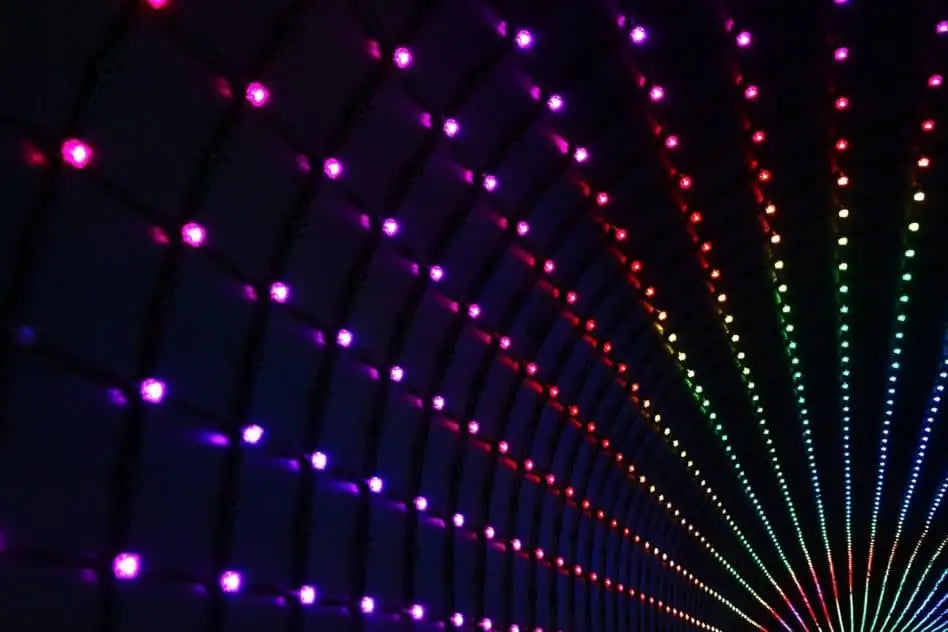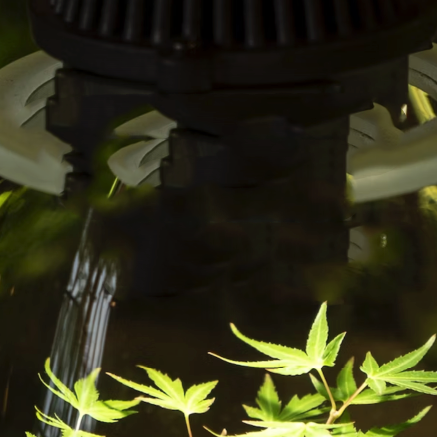A Little Bit About the History of LEDs
Technology, as we know it today, would not exist if it weren’t for semiconductor devices. There would be no laptop computers or mobile phones, not even a hand-held calculator.
Silicon and germanium are both elements and are classed as semiconductors. Some elements conduct electricity well (like most metals). Others do not conduct electricity very well at all (like ceramics). Those are called insulators. Silicon and germanium sit somewhere in-between the two. They are neither excellent conductors nor excellent insulators. There are other materials which are semiconductors, but they are not elements like silicon and germanium. They are compounds like gallium arsenide and cadmium selenide.
For half of the 20th century, devices that required electronic amplification or switching used glass devices called valves. They were large, ran very hot, and wore out regularly. It is technically possible to build a computer with valves but it would be size of a large building and the heat coming off it would be intense
In the first part of the 20th century it was discovered that if tiny amounts of particular impurities are added to germanium or silicon it changes their electrical behaviour.
For quite a while germanium was used to make the first electronic semiconductor components but it is a relatively scarce element. It was difficult to produce large quantities of silicon which was pure enough to use. Silicon is highly abundant because it is a component of ordinary sand and quartz and eventually, a way of purifying silicon to 99.9999999999% was found and large-scale production of semiconductors became possible.
For example, if boron is added to silicon, it makes something called p-type silicon.
If arsenic or phosphorus is added it makes n-type silicon.
N-type silicon has a surplus of electrons whereas p-type silicon has a shortage.
When a piece of n-type silicon is joined to a piece of p-type silicon it creates an electrical one way valve. It only allows electricity to travel through it in one direction. This device is called a diode.
By Raffamaiden - Own work, CC BY-SA 3.0, https://commons.wikimedia.org/w/index.php?curid=21285768
Transistors consist of 3 pieces semiconductor joined together in either a pnp or npn configuration. It can be used to amplify an electrical signal or act as an electrical switch. The invention of semiconductor components which could switch and amplify in 1948 eventually paved the way for the technology that we see around us today. A computer component such as a cpu or memory chip is made up of an enormous quantity of tiny transistors which, these days are only a few nanometres in size. Advancements in production mean that literally billions of them can be fit on a single cpu chip.
It was discovered in the early 50s that by applying a layer electroluminescent material to a diode could turn it into a light source. The first LEDs were infrared, but in the 60s, red and green LEDs were developed. In 1972, yellow LEDs were developed. To begin with, LEDs were mostly just used on indicator panels.
Most colours can be created by mixing varying amounts of red, green, and blue. With red and green LEDs already being produced, the race was then on to find a way of making blue LEDs.
Finally in 1986, a way was found to make blue LEDs but were very dim. Finally in 1993, a man called Shuji Nakamura developed a high-power blue LED. White LEDs were now possible, and it wasn’t long after the arrival of blue LEDs that white LEDs (made with red, green and blue electroluminescent compounds) were developed.
As time has gone by, the brightness of LEDs of all colours has increased considerably. Also, the cost of LEDs has come down. This was predicted by a scientist called Roland Haitz in 2000 and has so far remained true. It is called Haitz’s law and it’s a bit like a Moore’s law for LEDs. LEDs were always destined to get more efficient and cheaper with time:
By Geek3 - Own work, CC BY-SA 4.0, https://commons.wikimedia.org/w/index.php?curid=64876653
We have seen LED grow lights become the most efficient of all the different light types. They are also full spectrum. The latest crop of LED grow lights boast an efficiency of 2.7 or 2.8 umols of PAR light per watt. The very best HPS grow lights only output 2.1 umols/watt.
The electrical power that goes into a grow light gets converted into a mixture of light and heat. In an LED grow light, because more of the electrical power is converted into light, less of it is converted into heat. This means that you get more yield per watt and your grow room temperatures won’t soar in the summer.
We, and our customers, are in awe at the best LED grow lights these days. Try one and you won’t look back!

